The Pandav Leni Caves in Nashik, also known as Trirashmi Caves, are a stunning collection of 24 ancient rock-cut Buddhist caves carved between the 3rd century BCE and the 2nd century CE. Perched atop the Trirashmi Hills, these caves beautifully reflect India’s early Buddhist architecture and heritage.
Featuring intricately carved pillars, Viharas (monk dwellings), Chaityas (prayer halls), and ancient inscriptions, Pandav Leni offers both historical depth and scenic charm. The site attracts history enthusiasts, trekkers, and spiritual travelers, especially during sunrise when the view of Nashik city from the hilltop is breathtaking.
This guide covers Pandav Leni Caves timings, entry ticket details, travel tips, and nearby attractions, helping you plan your visit effortlessly and experience one of Nashik’s most iconic heritage destinations.
Quick Overview of Pandav Leni Caves
Before diving into the detailed overview, here’s a quick snapshot of the Pandav Leni Caves.
| Feature | Details |
|---|---|
| Location | Here |
| Best time to visit | Cooler months from October to March. |
| Time Period | 1st century BCE to 3rd century CE |
| Number of Caves | 24 rock-cut caves |
| Religious Affiliation | Buddhism |
| Key Structures | Viharas (monasteries), Chaityas (prayer halls), Stupas (relic mounds) |
| Architectural Highlights | Intricate carvings, inscriptions, pillars, and sculptures |
| Primary Purpose | Monasteries and prayer halls for Buddhist monks |
| Cultural Significance | Important site for ancient Buddhist art and architecture |
| Management | Archaeological Survey of India |
| Accessibility | Open to the public; popular tourist attraction |
Pandav Leni Caves Historical Importance
The Pandav Leni Caves hold significant historical and cultural importance, particularly in the context of ancient Indian history and Buddhism. Here are some key points:
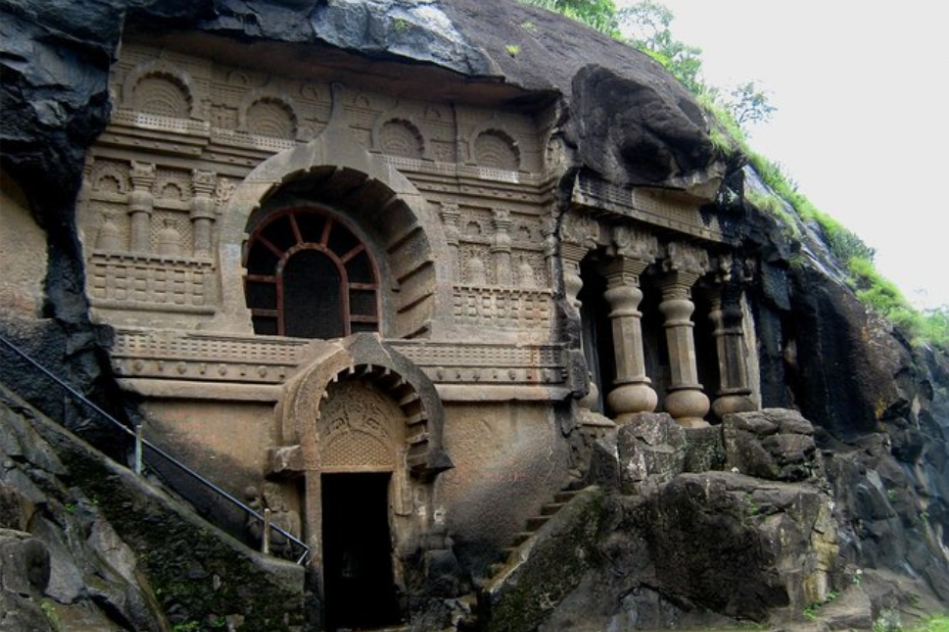
- Buddhist Monastic Complex:
The caves were primarily used as a monastic complex for Buddhist monks. They served as viharas (monasteries) and chaityas (prayer halls), providing a place for meditation, study, and communal living.
- Architectural Significance:
The caves are renowned for their intricate carvings, sculptures, and inscriptions. They showcase the architectural and artistic skills of the period, with detailed depictions of Buddhist symbols, deities, and motifs.
- Inscriptions:
Several inscriptions found in the caves provide valuable insights into the socio-economic and religious life of the time. These inscriptions mention donations made by various individuals, including kings, merchants, and lay devotees, indicating the patronage and support for Buddhism.
- Association with Buddhism:
The Pandav Leni Caves are closely associated with the spread of Buddhism in the region. They reflect the influence of Buddhist teachings and the establishment of monastic communities. The caves also highlight the transition from Hinayana (Theravada) to Mahayana Buddhism, as seen in the evolving styles of art and architecture.
- Cultural Heritage:
Today, the Pandav Leni Caves are an important cultural and historical heritage site. They attract tourists, historians, and scholars interested in exploring the rich legacy of ancient Indian civilization and Buddhist heritage.
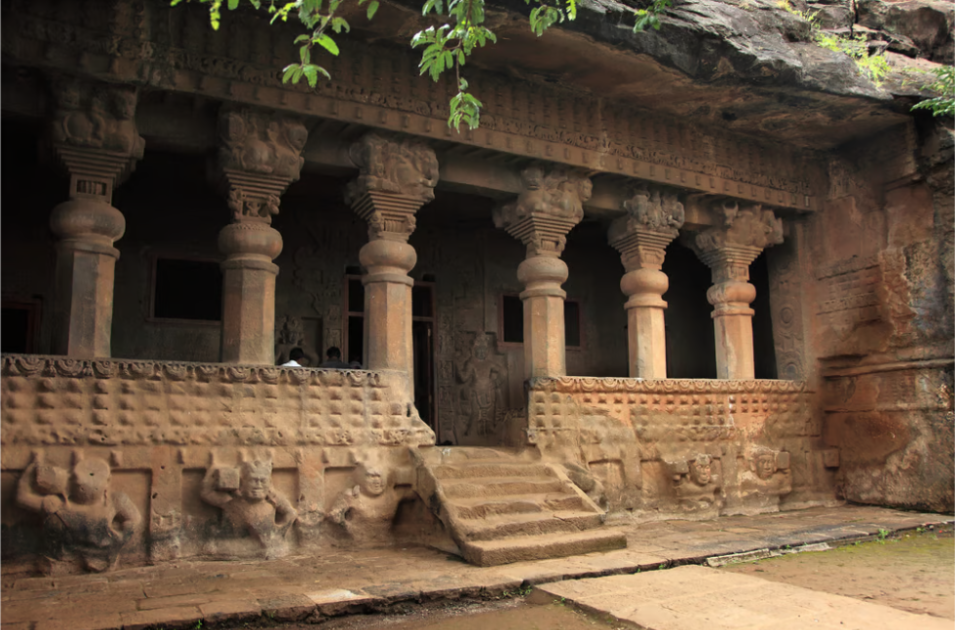
History and Origin Pandav Leni Caves
In this section, we’ll explore the origins of these caves, their construction, and the role of Buddhism in their development.
Construction and Early Inhabitants
These ancient caves were constructed from the 1st century BCE to the 3rd century CE. Built by Buddhist monks and craftsmen, the caves served as monasteries and places of meditation. The early inhabitants of these caves were Buddhist monks who used the space for religious practices and as a sanctuary.
Buddhist Influence
The Pandav Leni Caves are deeply rooted in Buddhist tradition. The influence of Buddhism is evident in the caves’ design, layout, and artistic elements. The caves were integral to the spread of Buddhism in the region, serving as a spiritual and cultural hub for monks and followers.
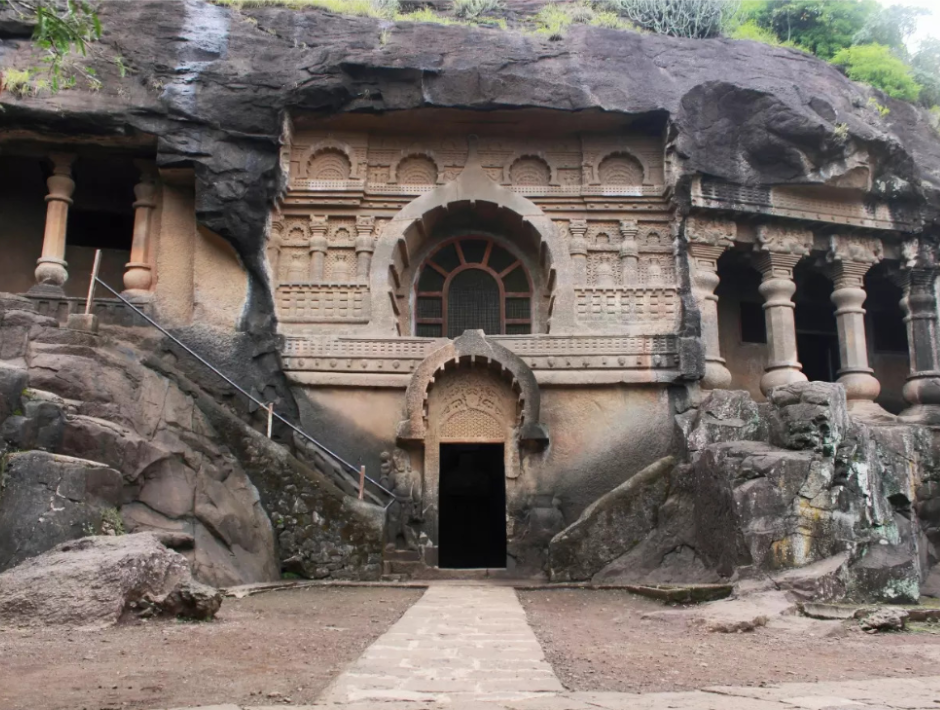
Dating the Caves
The caves are believed to have been constructed over several centuries, with the oldest dating back to the 1st century BCE. Their construction timeline provides valuable insights into the evolution of Buddhist architecture and the region’s historical significance.
Pandav Leni Caves Architectural Features
These caves serve as a window into the past, showcasing the artistic and engineering skills of ancient craftsmen.
Let’s take a look at the caves’ structure and layout, the significance of the carvings and inscriptions, and the purpose of the stupas and viharas found within them.
Structure and Layout
The Pandav Leni Caves consist of 24 rock-cut caves, each uniquely designed to serve different purposes. The layout of the caves includes prayer halls (chaityas), monasteries (viharas), and other structures, all meticulously arranged to cater to the needs of the Buddhist community.
Carvings and Inscriptions
The caves are adorned with intricate carvings and inscriptions that reflect the artistic and cultural achievements of the time. These carvings depict various Buddhist symbols, figures, and motifs, offering a glimpse into the spiritual life and practices of the ancient inhabitants.
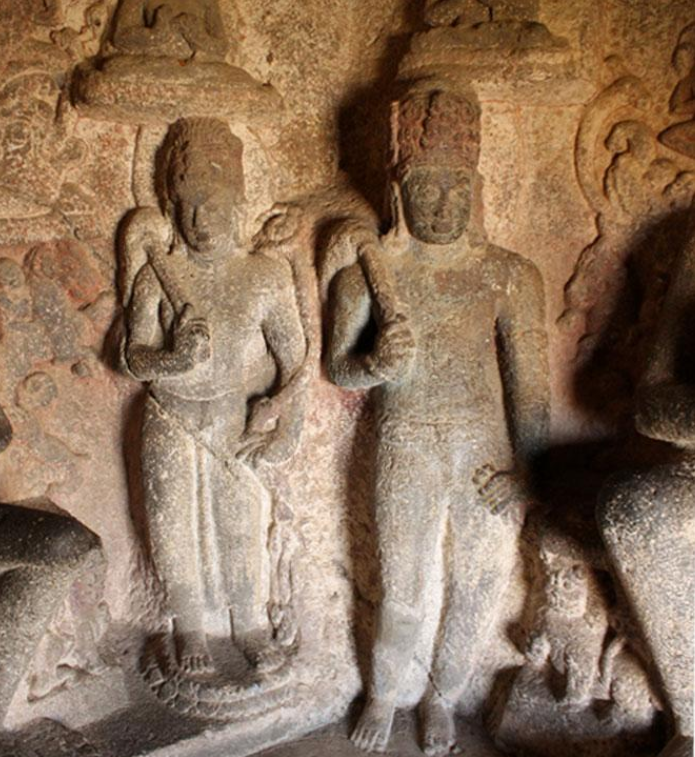
Stupas and Viharas
Among the most significant features of the Pandav Leni Caves are the stupas and viharas. The stupas and relic mounds were built as monuments to Buddha, while the viharas served as living quarters for the monks. These structures highlight the caves’ dual function as religious and residential spaces.
Cultural and Religious Significance
The Pandav Leni Caves hold profound cultural and religious importance, serving as a spiritual center for Buddhists and a site of historical interest for the local community.
Let’s explore how these caves were used for religious rituals, their link to Hindu mythology, and their ongoing role in local cultural traditions.
Buddhist Practices
Buddhist monks have historically used caves for meditation and monastic life. These caves provided a serene environment conducive to spiritual practices.
For example, the Ajanta Caves in India are renowned for their intricate carvings and paintings depicting Buddhist deities and scenes from the life of Buddha.
Monks used these caves as monasteries and temples, creating a space for meditation and worship.
Link to Pandavas
The Pandava Caves, named after the Pandava brothers from the Mahabharata, are believed to have been their refuge during their exile. This mythological connection has significantly influenced the naming and cultural importance of these caves.
The caves are often associated with the legendary tales of the Pandavas, adding a layer of historical and cultural depth to their significance.
Role in Local Culture
Caves have played a vital role in local cultures around the world. They have been used for shelter, religious ceremonies, and as places of refuge. In many communities, caves are considered sacred spaces integral to local traditions and cultural practices.
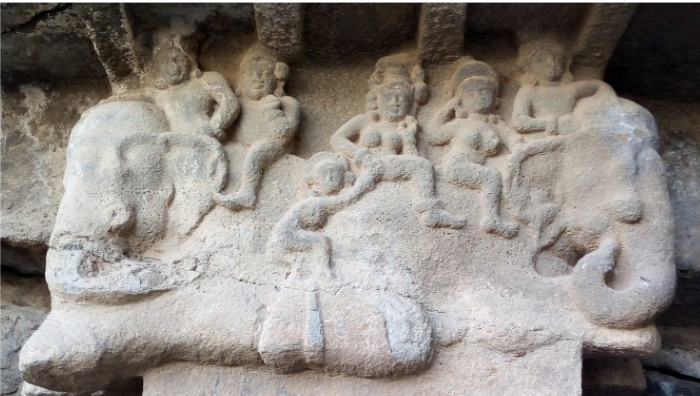
Tourism and Visitor Information
Visiting the Pandav Leni Caves is like stepping into a historical treasure trove. These ancient rock-cut caves, located near Nashik in Maharashtra, India, date back to between the 1st century BCE and the 3rd century CE. They are a testament to the region’s rich cultural and religious heritage.
- Architectural Marvels
The caves are a series of 24 rock-cut structures, each with unique features. Some of the notable caves include:
| Cave 3 | Known for its beautiful Chaitya (prayer hall) with a stupa at the center. |
| Cave 10 | Features a large vihara (monastery) with cells for monks. |
| Cave 18 | Contains exquisite carvings of Buddha and Bodhisattvas. |
- Serene Environment
The caves’ location on Trirashmi Hill offers a peaceful and serene environment, perfect for meditation and reflection. Panoramic views of the surrounding landscape add to the tranquility of the site.
- Accessibility
The Pandav Leni Caves are easily accessible from Nashik, which is well-connected by road and rail. The site is just a short drive from the city center, making it a convenient tourist destination.
- Visitor Experience
The caves provide a rich visitor experience with informative signage, guided tours, and well-maintained pathways. Visitors can explore the caves at their own pace, taking in each structure’s historical and artistic significance.
How to Reach Pandav Leni Caves in Nashik
Reaching Pandav Leni Caves in Nashik is easy and convenient, with multiple transport options available for visitors coming from nearby cities or other states. Here’s how you can get there:
1. By Road
Located about 8 km from Nashik city center, easily accessible by auto, cab, or private vehicle via the Mumbai-Agra Highway (NH 160).
2. By Train
Nashik Road Railway Station is around 11 km away. Autos and taxis are available outside the station for a quick 20–25 min ride.
3. By Air
Ozar Airport (Nashik International Airport) is about 25 km from the site, with taxis and rentals available for direct travel.
Preservation and Conservation
The Pandav Leni Caves are a priceless cultural and historical treasure, and preserving them for future generations is a significant challenge. Various conservation efforts have been implemented to maintain the integrity of these ancient structures, but the site faces ongoing challenges.
Conclusion: Pandav Leni Caves in Nashik is a top heritage site to visit in 2025
A trip to the Pandav Leni Caves in Nashik is not just a historical tour; it’s a serene blend of nature, spirituality, and ancient architecture. Set against the backdrop of the Trirashmi Hills, these rock-cut Buddhist caves offer breathtaking views and a deep connection to India’s 2,000-year-old past.
Whether you’re visiting for the sunrise, exploring the ancient carvings and inscriptions, or enjoying a peaceful trek, Pandav Leni offers an experience rich in history and calm. With updated amenities, affordable entry tickets, and convenient routes, it stands as one of the best tourist destinations in Nashik in 2025.